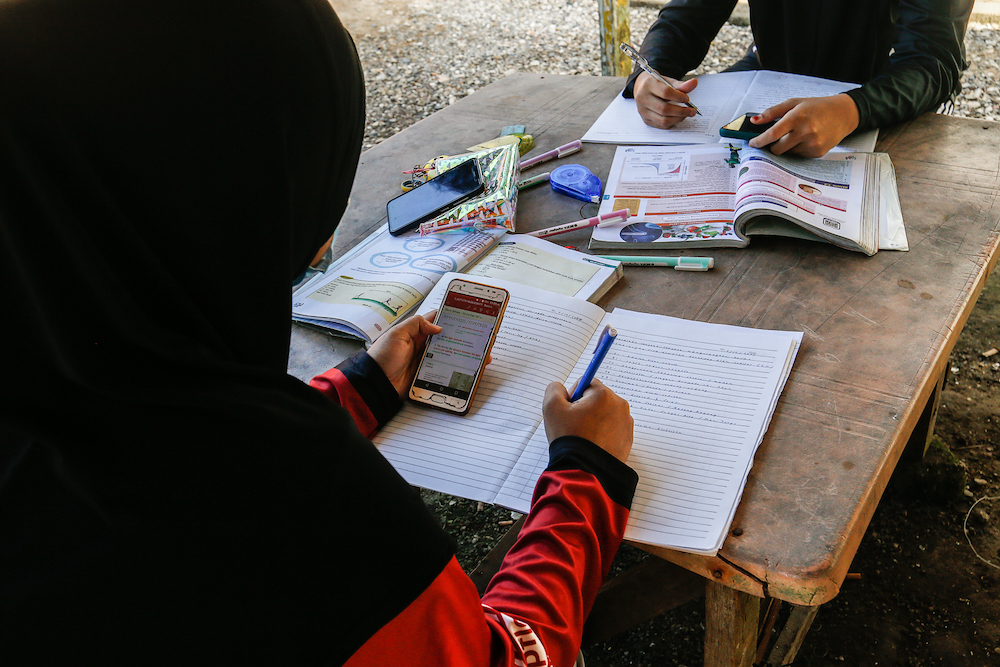KUALA LUMPUR, Feb 19 — MyDIGITAL and the Malaysia Digital Economy Blueprint, which was launched today, aims to achieve 100 per cent household access to the internet.
This will enable students to access online learning and create 500,000 new jobs by 2025.
In 2019, only 90.1 per cent of all households had internet access and only 35.3 per cent households have access to fixed broadband in urban areas and even less in rural areas with only 11.7 per cent households having access to fixed broadband.
The blueprint is looking at a RM70 billion investment in digitalisation by 2025 with a goal of the digital economy eventually contributing 22.6 per cent of the nation’s Gross Domestic Product (GDP).
Under the blueprint, all 1.7 million civil servants are expected to be digitally literate by 2025 and the public sector will provide cashless transactions as the preferred option by 2022.
About 80 per cent of end-to-end online government services will be integrated by 2025 and there will also be 80 per cent usage of cloud storage across government agencies by 2022.
Initiatives will be implemented to increase the number of start-ups to 5,000 while pushing for the adoption of eCommerce by at least 875,000 micro, small and medium enterprises (MSMEs) by 2025.
It also aims to attract two unicorn start-ups, either home-grown or foreign, by 2025. Unicorn start-ups refer to privately held start-up companies with a value of over US$1 billion (RM4 billion).
There are three main objectives in the blueprint: To encourage industry players to become creators, users and adopters of innovative business models; to harness human capital and to nurture an integrated ecosystem to allow adoption of digital economy by society.
The vision is to transform Malaysia into a regional leader in digital economy and achieve inclusive, responsible and sustainable socio-economic development.
A look at the six strategic thrusts
The first is to drive digital transformation in the public sector for enhanced and effective public service delivery.
The second thrust is to push for digitalisation in the private sector as a way to boost economic competitiveness and ultimately position Malaysia as a destination for digital economy-related investments and activities.
The third looks at building high quality and extensive access digital infrastructure as the foundation to economic, social and government transformation.
The fourth thrust will be focused on developing competent digital talent through digitalisation at various levels of education along with up-skilling and reskilling of the existing workforce.
The fifth is to create an inclusive digital society by narrowing the gap in digital divide and ensuring equitable access to opportunities and information for all.
Finally, the last thrust is to build a secure and ethical digital environment to ensure safety, privacy, security, reliability and data ethics in data services.
Three initiatives which stand out
Among the 48 national initiatives and 28 sectoral initiatives in the blueprint, three initiatives stand out to push for digitalisation in the society.
First is the mandated inclusion of broadband as a basic infrastructure in new developments to ensure equal access to broadband services.
Second is the “MY Device” programme which will be introduced using a people, private, public partnership (PPPP) model to ensure all students in Malaysia have access to digital learning.
Finally, the data protection and related regulatory framework will be strengthened to ensure privacy and protection of personal data.
Three phases (2021 – 2030)
The Malaysia Digital Economy Blueprint will be implemented in three phases over nine years starting from this year.
Under the first phase, which is between 2021 and 2022, the focus is on strengthening the digital foundation with the government taking the lead to create a conducive regulatory framework that can expedite digital infrastructure development.
This is to increase confidence in the use of technology across all levels of society and make data and digital intelligence the heart of the digital economy in the country.
Phase Two (2023 - 2025) is to drive digital transformation and inclusion. This phase will see a faster and increased rollout of broadband infrastructure projects, equitable access to opportunities and agile regulations for the gig economy through unhindered business innovation.
There will be a push for more extensive use of e-government services while local champions of the digital economy will be groomed to become regional leaders.
The final phase, from 2026 to 2030, is to position Malaysia as a regional market producer for digital products and digital solutions providers.
By then, the government will be data driven, processes digitised and data will be at the centre of its administration.
The government will provide a conducive environment for digital economy-related businesses and there will be increased cyber security awareness among businesses and society.
Governance structure
The National Digital Economy and 4IR Council, chaired by the prime minister, was set up in November 2020 as a delivery-driven governance structure to implement the blueprint.
Each thrust under the council for policy development — digital talent, digital infrastructure and data, emerging technology, economy, society and government — will come under the auspices of the relevant ministry.
A joint secretariat will act as Strategic Change Management Office (SCMO) to roll out change management programmes as a way to drive and increase acceptance of digitalisation across all levels.
Specific clusters spanning agile regulation, cyber security, inclusivity and sustainability will also ensure clarity of focus and enable multi-agency collaboration.
The implementation will be driven by PPPP with the public sector facilitating policy development and encouraging participation by the private sector, civil society organisations and academics.
There will be a KPI-based evaluation and dashboard reporting of cluster and initiative achievements and each initiative is tracked by realistic milestones and KPIs.
There will also be multiple working groups involving federal and state government-led initiatives, private sector, civil society organisations and academics.
The complete Malaysia Digital Economy Blueprint is available for download at at www.epu.gov.my



















